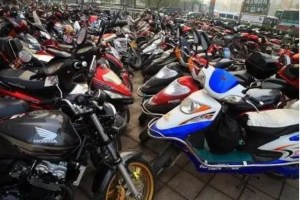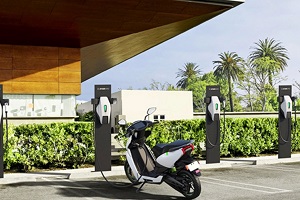Introduction
As we all know, the new national standard divides electric vehicles into two categories: national standard vehicles and exceeding standard vehicles (electric motorcycles, electric light motorcycles). At present, 90% of the vehicles used by electric vehicle users on the market are electric motorcycles, so the charger starts with the charging power consumption of electric motorcycles. The most common electric motorcycle in our daily life, the battery model is generally 60V. Take a 60V20AH battery as an example. Its output voltage is generally 48V-67.2V, while the output current is generally 2.5A, and the full charge time after full dis‐ charge is 8 hours, so this kind of motorcycle needs about 1.44 degrees of electricity at a time (output voltage * output current * full time = power consumption).
Secondly, the charging power consumption of the current market-led national standard electric bicycles. The battery model is 48V. Take the 48V20AH battery as an example. Its output voltage is generally 39V-54.6V, the output current is about 2.5A, and the full-time is also 8 hours. Therefore, electric bicycles only need 1.2 degrees of electricity at a time (output voltage * output current * full time = power consumption).

Finally, the Charger has sorted out some commonly used battery specifications that are full of primary power consumption for your reference Of course, due to the influence of temperature, battery quality, and other factors, there will also be some deviations in the amount of charge on a single charge. For example, in summer, due to the high temperature, the charging time will generally be less than 8 hours. In winter, due to the low temperature, the charging time generally exceeds 8 hours. In addition, there will be differences between brand batteries and inferior batteries. Generally speaking, the charging conversion rate of low-quality batteries will be low, and their power consumption will be higher than that of brand batteries.
The charging power consumption of electric vehicles is not only affected by temperature and battery quality but is also closely related to the charging habits of electric vehicle users. So how can electric vehicle users charge the most power-saving?
- Properly grasp the charging time
Generally speaking, the charging time of electric vehicles should not exceed 8 hours. Users of electric vehicles should accurately grasp the charging time. The green light is on, indicating that the battery can be used or fully charged, but there is still a gap from 100%. It is recommended to continue to float for two hours after the green light is on.
- Find the right time to charge.
To save trouble, many electric vehicle users always wait until the electric vehicle is fully exhausted before charging, which will cause certain damage to the battery. Electric vehicle users should charge when the electric vehicle has about 30% of the remaining power.
- For chargers and cars
Electric vehicle batteries all have a certain degree of matching. Different batteries and chargers are different. Electric vehicle charging should be specially designed for chargers. In real life, many electric vehicle users don’t care and often use other people’s chargers to charge. Doing so will cause a mismatch between charging voltage and current, which can easily lead to a short circuit or insufficient charging.
- Regular deep discharge
It is recommended that electric vehicle users carry out deep discharge on average once every two months, that is, ride long distances until the Undervoltage indicator light shines, the battery runs out, and then recharges to restore the battery capacity. This will also let electric vehicle users know whether the current capacity level of the battery needs to be maintained and protected
- It is strictly forbidden to lose power storage.
After use, it should be charged in time. It cannot be placed for a long time without power. The longer the power loss is idle, the heavier the battery damage will be.
Conclusion
The above 5 points are the power-saving mode of electric vehicle users when charging. Generally speaking, as long as electric vehicle users use a little snack in their daily use, they can do it.
Authored Article by: Neeraj Kumar Singal, Semco Group








